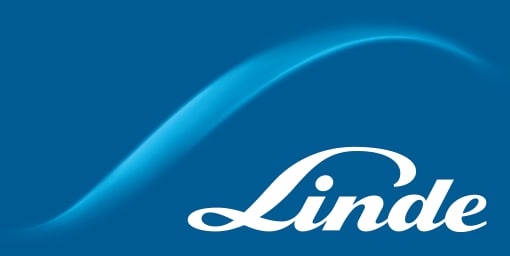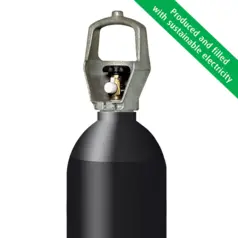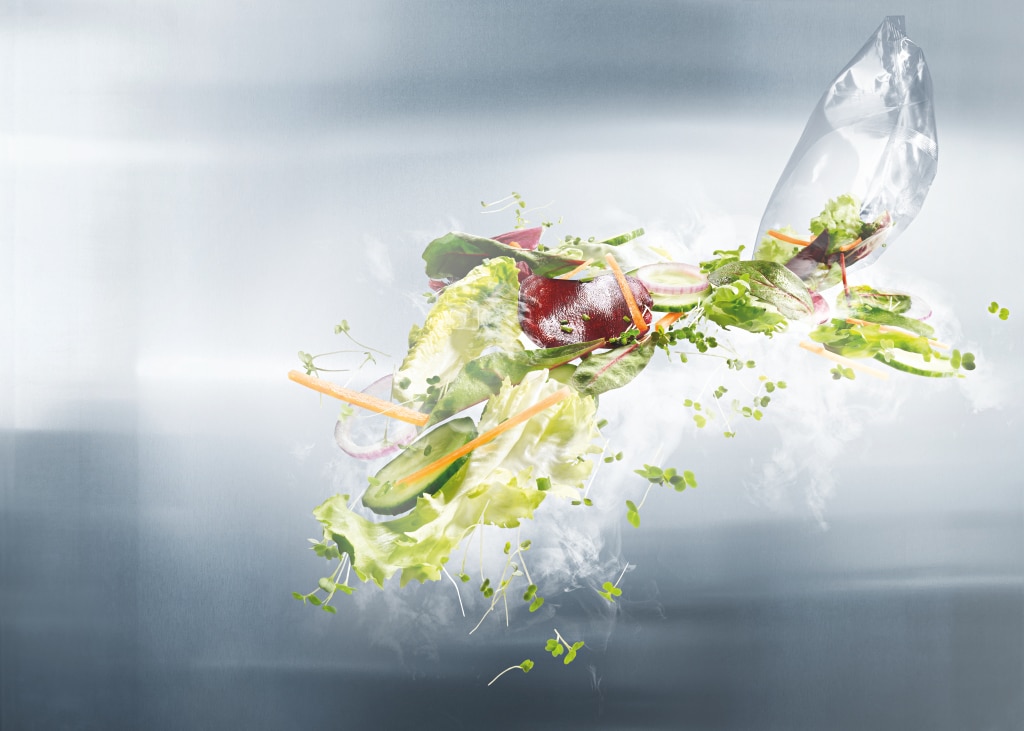
Gas-enabled applications for various industries to optimise their processes
Carbonation is the process of adding carbon dioxide to drinks to create fizz, while controlled atmosphere stunning is a technology that creates humane conditions for animals being slaughtered, improving animal welfare and meat quality. Carbon dioxide fertilization enhances the growth of plants in greenhouses, while liquid nitrogen dosing strengthens bottle walls to avoid breakage during transportation. Modified atmosphere packaging uses gas mixtures to extend the shelf life of foodstuffs, without the need for chemicals or freezing.
Success through partnership
We work closely with food research institutes in many countries, e.g. SIK (Sweden), VTT (Finland), Campden (UK), and have numerous food-processing customers worldwide. To create the best atmosphere for each application, we also collaborate closely with suppliers of packaging materials and machines. Several factors affect the packaging atmosphere: the foodstuff and its properties, microbial activity, hygiene requirements, the pre-packaging delay and temperature. The permeability and other properties of the packaging material, the free gas volume within the package, and the residual oxygen level are also important.
Modified Atmosphere Packaging (MAP)
Food manufacturers are always looking for ways to extend shelf life. They want to
achieve this
without altering the physical or chemical properties of foodstuffs, or adding any unnatural ingredients.
Modified Atmosphere Packaging (MAP) is the ideal solution. This natural method is rapidly gaining in
popularity around the world. It can also complement alternative preservation methods.
We have developed a range of application-specific packaging solutions under our MAPAX® brand. Synergizing
our vast knowledge of food science, gas mixtures and packaging, MAPAX extends shelf life – the natural way.

With MAPAX, you can:
- ● Increase your sales, by satisfying growing demand for fresh and naturally preserved products
- ● Extend shelf life without chemicals or freezing
- ● Increase shelf life in the distribution chain, by days or even weeks
- ● Retain taste, texture and appearance
- ● Enhance production and distribution efficiency by cutting costs
Related areas
Carbon dioxide is the most frequently used industrial gas in the beverages industry. It is dissolved in drinks to create the well-known 'fizz' effect. We deliver food-grade carbon dioxide, sourced from both natural wells and industrial facilities. Our carbon dioxide complies with all relevant food guidelines. During carbonation, carbon dioxide is added to the liquid in a carbonator. There, vaporized carbon dioxide is mixed under pressure with temperature-controlled water. Syrup, sweetener and other ingredients are then added, to create the final product.
Consumer interest in animal welfare is rising – as are quality requirements for meat and poultry. Our sophisticated Controlled Atmosphere Stunning (CAS) solutions satisfy the evolving needs of today’s slaughter plants. We can help you to design a safe and reliable system tailored to your individual needs.
CAS modifies the atmosphere to create humane euthanasia conditions for animals. This gentle technology provides a less stressful experience, contributing to improved animal welfare, better processing conditions and higher quality meat.
CAS provides a less stressful experience for animals and leads to various improvements, including a safer working environment, better plucking results, reduced fecal contamination, easier animal handling, elimination of hemorrhages, bruises and broken bones, reduced meat bruising, and better bleed-out of arteries in the fillet, wing and thigh. These benefits make CAS a preferred method for animal euthanasia, which enhances both animal welfare and meat quality.
Normal air has a carbon dioxide concentration of 340 ppm. This is insufficient for producing the best yield. Plants usually require carbon dioxide concentrations of between 600 and 1,000 ppm. Supplementary carbon dioxide is particularly important when using artificial lighting. If the concentration of carbon dioxide is allowed to fall, growth is halted and artificial lighting provides no benefits.
When extra carbon dioxide is added to greenhouse air, the tomato, cucumber and lettuce yield improves by up to 25-30%, or even more. Cut flowers and potted plants also benefit from carbon dioxide fertilization. Carbon dioxide not only increases yield, but also produces an earlier harvest and improves plants’ resistance to disease and pests. Carnations can bloom up to one month earlier. Lettuce is ready for harvesting weeks earlier, while tomatoes in tomato sprouts can ripen a week sooner than usual. Carbon dioxide fertilization pays off, as clearly indicated by several studies and practical experience.
In greenhouses heated by burning propane, carbon dioxide is obtained as a by-product, but often at the wrong time of day. Carbon dioxide is needed most at midday, when extra heat is seldom needed. The heating system must be able to store this heat, and release it during the cold hours of the day. There is always the risk of incomplete burning, resulting in the formation of NOX, which is very harmful to plants.
If a greenhouse heating system cannot store heat, adding pure carbon dioxide to the greenhouse air is usually the best solution. This also helps to avoid the moisture problems produced by burning propane. One kilogram of propane generates 1.6 kilograms of water vapor, which condenses into liquid water. Such water won’t go away by itself.
When making drink bottles, manufacturers of non-carbonated beverages (water, juices, teas, etc.) generally rely on PET (polyethylene terephthalate). Over the last 20 years, in line with environmental and cost pressures, plastic bottles have become thinner. However, this has reduced the weight of PET polymers in bottles, resulting in thinner, weaker bottle walls. After filling, bottles must be stacked for transportation to customers. At the bottom of a pallet, weak bottles with thinner walls buckle under the weight of the bottles above. This leads to unsafe conditions and costly product losses.
Such a problem can be avoided by pressurizing the bottles. Available in liquid form, nitrogen is the perfect medium for this. When liquid nitrogen vaporizes, it expands to 682 times its liquid volume. In addition, because it is inert, it protects the drink against the drink spoilage and lost revenues that can result from oxidation. We supply the liquid nitrogen (LIN) needed for the LIN dosing systems commonly used in bottling facilities. Such systems add a droplet of liquid nitrogen, which is trapped by immediately capping the bottle. Expanding as it vaporizes, the trapped droplet increases the internal pressure. This ‘rigidifies’ the bottle for stacking.
Adequate and stable supply of oxygen is essential for fish welfare, growth and survival. The amount of oxygen required for optimal fish growth is dependent on the fish species, size, feed fish density, activity levels and water temperature.
When there is a reduction or stop in oxygen supply, fish will soon start experiencing problems and, in serious cases, die from lack of oxygen. Fish welfare is a constant concern. Maintaining proper oxygen levels is important to the immune system of fish and leads to stable production and economic benefits for the farmer.
- Carbonation
- Controlled Atmosphere Stunning (CAS)
- Carbon dioxide fertilization
- Liquid nitrogen dosing
- Oxygenation in aquaculture
Carbonation
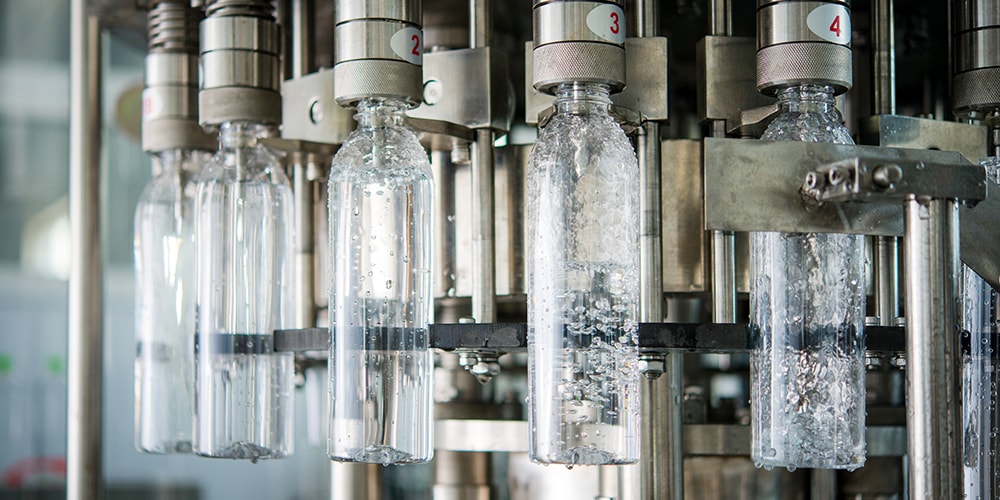
Carbon dioxide is the most frequently used industrial gas in the beverages industry. It is dissolved in
drinks to create the well-known 'fizz' effect.
We deliver food-grade carbon dioxide, sourced from both natural wells and industrial facilities. Our
carbon dioxide complies with all relevant food guidelines.
During carbonation, carbon dioxide is added to the liquid in a carbonator. There, vaporized carbon
dioxide is mixed under pressure with temperature-controlled water. Syrup, sweetener and other
ingredients are then added, to create the final product.
Buy products here
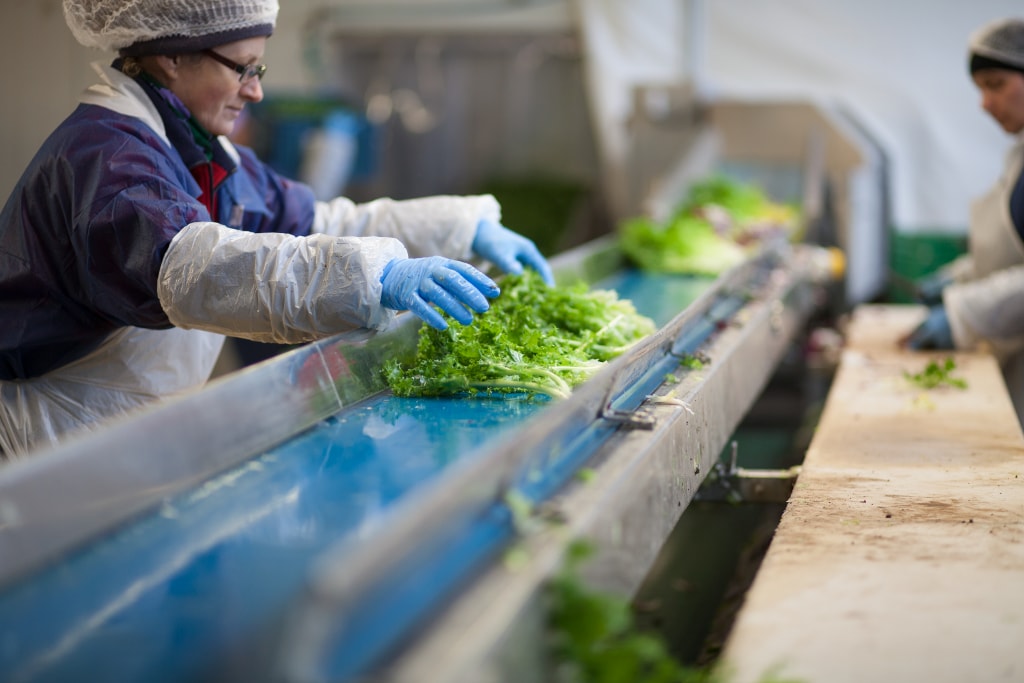
MAPAX technology
MAPAX gas mixtures inhibit microbial growth and can consist of gases such as CO2, N2, O2, N2O, Ar, and H2 in specific ratios. CO2 inhibits microorganisms by reducing pH and penetrating biological membranes. Nitrogen prevents oxidation and package collapse, while oxygen is needed for meat's red color and allows fruits and vegetables to breathe. MAPAX offers tailored solutions for dairy, dry foods & bakery, fish & seafood, fruit & veg, meat, and prepared & catered foods industries.
Questions and answers about modified atmosphere packaging
Which gas mixture should I use?
It depends on the type of food you produce, the shelf-life you need and the way your product is consumed. For detailed information, refer to the specific MAPAX® flyers and your local Linde application engineer. Tests will probably need to be conducted to decide the optimum mixture.
I am just starting out with the MAP system. What equipment do I need?
Most systems require a minimum of a regulator, a flowmeter and piping. It is recommended to start with the pre-mixed single cylinders. Contact your local Linde application engineer to see what else might be needed.
Is it better to purchase pre-mixed cylinders or to purchase pure gases and mix them on site?
This depends on the volume and the type of production at your facility. If the volumes are large or your plant produces various products with different gas requirements, it would be better to mix the right gases on site.
Where can I place the cylinders that I am using?
Ideally you would want them out of the processing area for quality and hygiene reasons. Please refer to your local regulations.
How much pressure do I need to supply to my machine?
This depends on the type of machine and the type of product being run. Consult your machine manufacturer as well as your local Linde application engineer.
If I use more gas, will using individual cylinders become more expensive?
Yes. As your business grows, so will your gas consumption. It is important to consult your Linde representative to work out the best time to switch from cylinders to a bulk tank supply mode.
What about safety for the use of gases?
We provide safety information and training. Each country has its own safety regulations for the use of gas. These regulations must be followed and integrated into your quality systems. Our specially trained experts will support you here.
What precautions should be taken when using gas mixtures with a high oxygen content?
Please contact the machine supplier to check whether the machine is suitable for operation with mixtures containing high oxygen levels. The machine has to be specified for high oxygen ratings.
What are the functions of different gases?
The most important gas is CO2, since it delays the growth of microorganisms by dissolving into the food. N2‚‚ is used to replace O2‚‚ and thereby decrease deterioration. It is also used as a buffer gas. O2‚ is used to keep the red colour of meat and for the respiration of fruit and vegetables. The gases are normally used in mixtures to suit the needs of the specific product.
Why should I use food-grade gases?
Industrial gases do not meet the legal demands relating to the quality, traceability, labelling and handling of food-grade gases as additives.
How far can I extend the shelf-life of my products by using an MAP system?
That depends on many factors such as food product, temperature, hygiene, package and gas mixture. Generally, shelf-life can be increased by a period ranging from days to several weeks. For specific information, see the MAPAX brochure for your particular product.
Can I freeze a product that is packed in a modified atmosphere?
Yes- but it would be more effective and efficient to first freeze the product and then pack it in a modified atmosphere. Make sure the packaging material is suitable for freezing.
Which gas or gas mixture can prevent the greenish colouring on the ham I produce?
This greenish colouring is caused by bacteria grown naturally during processing. There is no gas or mixture that can change this afterwards. The meat I pack under MAP loses its colour, but the colour reappears after I open the package.
Am I using the right gas mixture?
The myoglobin molecule, which is responsible for the colour of meat and meat products, turns different colours with different gases. For recommendations relating to the correct gas mixture, see the MAPAX brochure.
The sliced meat product I pack under MAP turns grey. Sometimes only spots on the meat have different colors. Could that be caused by a wrongly filled gas cylinder, or is it caused by the gas mixture in general?
The gases and mixtures in our food-grade gases are controlled constantly and the wrong
labelling or filling of a cylinder is almost impossible. The grey spots may be caused by a
number of factors. To give you just a few ideas: the UV filter of the films could have been
changed so that it no longer matches the light exposure, additives could have been changed,
or the process could have been altered. Even raw materials like water and meat can vary.
Maybe the optimum gas mixture is not being used, or there is an excessively high residual
oxygen level in the package or condensed water that can fall down from the lid. Contact your
local Linde engineer for tests.
Why does drip loss appear in fresh meat in a modified atmosphere?
Drip loss is caused by meat handling and processing. Carbon dioxide and oxygen are absorbed and metabolised by the product and microorganisms, creating a partial vacuum inside the container. In fresh meat packaging, this vacuum may be strong enough to actually squeeze water from the meat if insufficient nitrogen is present in the headspace. This can result in drip inside the package. Adding nitrogen should minimise the problem.
When I open the food package, I can smell a specific odour. How can we explain this?
In most cases when food is properly stored, this is a normal phenomenon. Each product generates its own odour which consists of many volatile compounds that collect in the headspace of the package. Wait a minute after opening. If the smell continues, please check the quality further.
Which gas or gas mixture should be used for the ripening of meat?
Meat can be successfully ripened in mixtures of CO2‚ and N2. The mixture depends on the type of meat and how it is cut.
There are some pale grey, almost white spots on smoked sausages. The sausages are rinsed, cooled in a cryogenic freezer and then packed in MAP. How can I prevent this?
There may be a number of reasons for these spots, for example, a local low temperature area could arise during the cooling process that often comes before the slicing. Cryogenic freezing involves very low temperatures that can cause bleaching. Contact your application engineer to check the freezer. Changes in various steps of the process may influence this.
Does the package labelling have to indicate that the produce is packaged in a modified atmosphere?
That depends on regional regulations. For EU countries, if the durability of a food has been extended by being packaged in a modified atmosphere, the packaging must state: Packaged in a protective atmosphere.
What headspace (gas volume) is used in the package?
That depends on the food product and type of package. The gas volume / product volume ratio lies between 0.5 for sausages and 2 for fish.
I get condensation in my package, what’s wrong?
The most likely reason is the temperature difference between the product and the storage temperature. We can improve packaged product visibility by using anti-fogging films. The product should always have the lowest possible temperature at the moment of packaging and be kept at the same temperature or lower during storage. The package could also be punctured. Check the residual oxygen.
My packages inflate over time. Is the product fermenting?
This is nearly always due to the CO2‚ which is generated by the product. This can be caused by too high temperatures (exceeding 4Ā°C) over a certain time. This process cannot be reversed by cooling the product down again. Some products, such as hard cheeses, develop CO2‚ through natural fermentation; this process can sometimes continue after packing and cause an undesirable inflated effect. The package can also be contaminated and develop unwanted gases which cause it to expand. Check immediately with your food lab.
Why do MAP packages collapse?
This is a normal physical phenomenon that often happens to products with a high water content. CO2‚ is a basic compound in MAP mixtures and dissolves easily in the water and fat phase of a product kept at low temperatures. That’s why the amount of CO2‚ in the head-space decreases and creates a small degree of underpressure inside the package.
How do I know that I have the right gas volume and mixture in the package?
There are several types of gas analysers on the market. They are easy to use and will give you fairly accurate answers to questions about mixtures and residual O2‚ levels. It is important to establish good routine checks to make sure you do not package a large amount of produce and end up with a less-than-optimum outcome. Your Linde application engineer will assist you by advising on the mixture and equipment best suited to your needs.
Why does the residual oxygen in the package increase over time?
There are a few reasons why this might happen. There could be a leak in the package or the oxygen barrier may not be high enough. Moreover, air (containing 21% oxygen) could have been trapped within the product during packaging (cakes and breads for example). However, the most common reason is leaks in the sealing.
How much residual oxygen is recommended in the package?
This depends very much on the product. Consult your local Linde application engineer.
 Downloads
Downloads
| Safety datasheets | Product datasheets & brochures |
|---|---|

